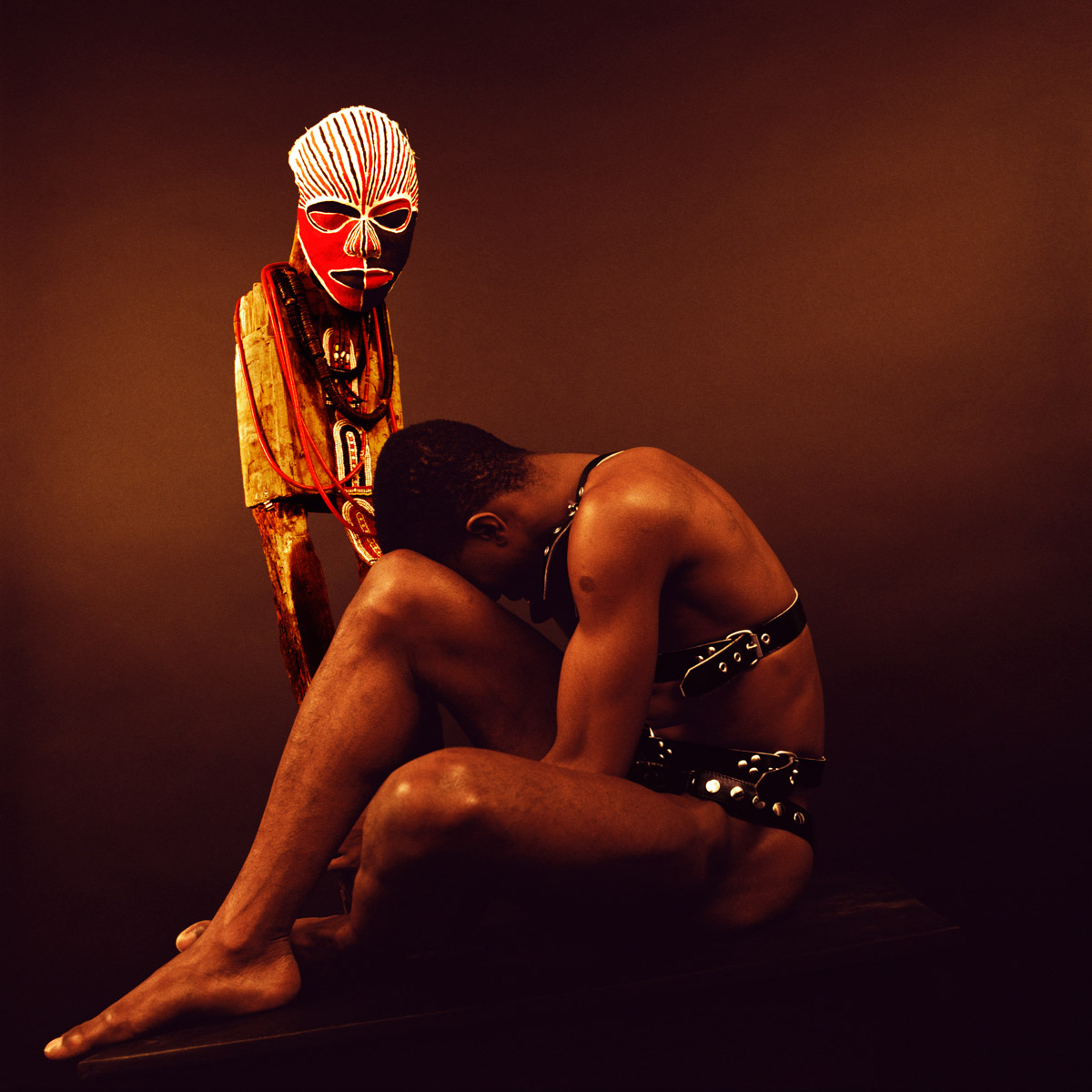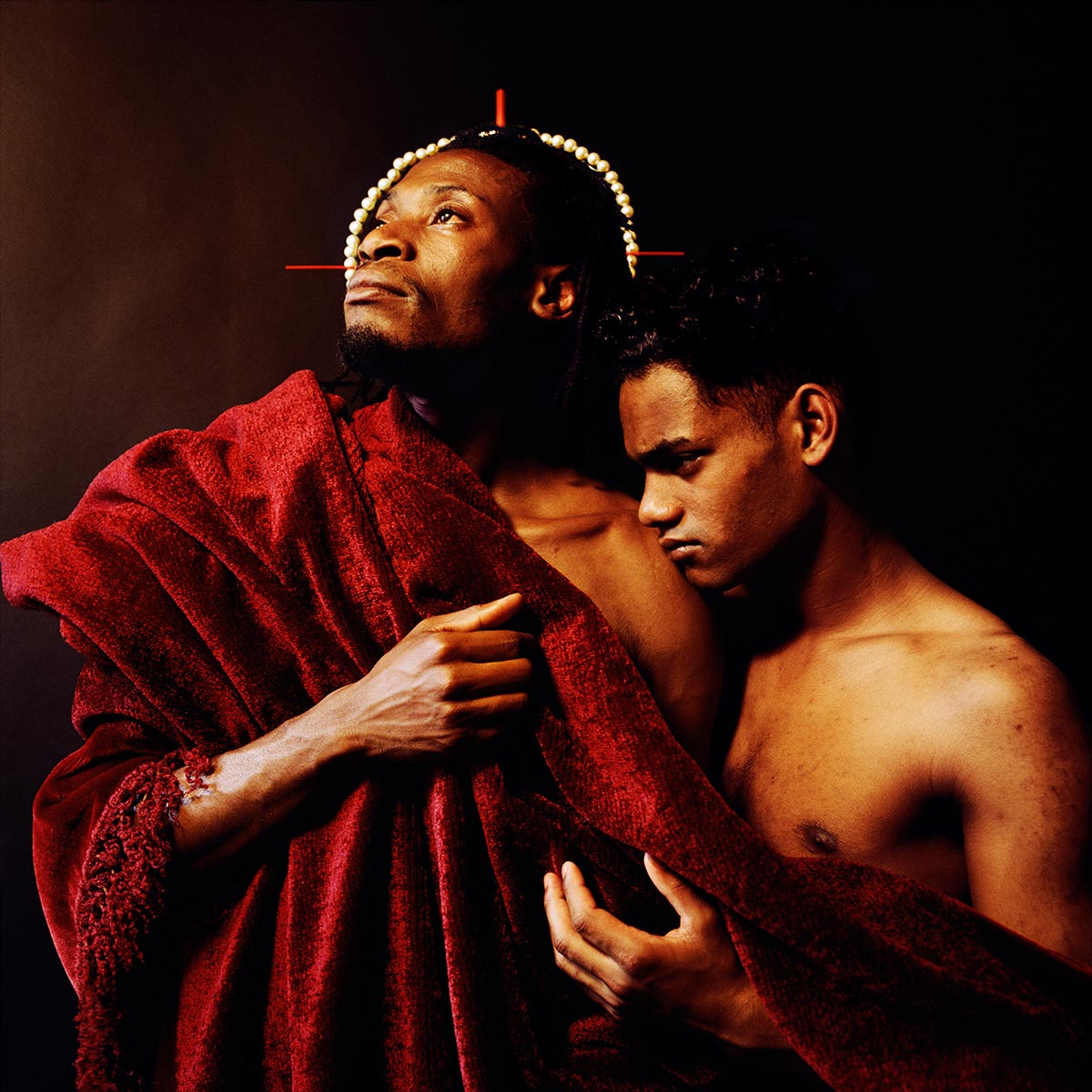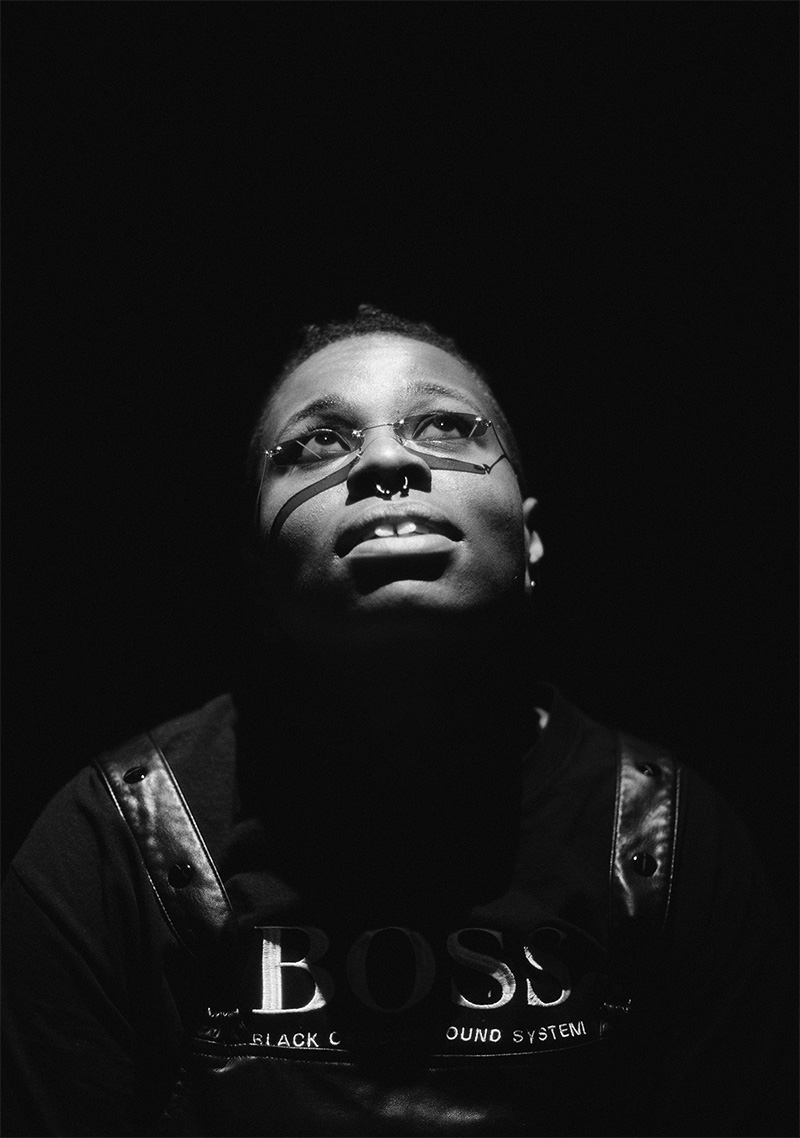In 2021, Evan Ifekoya devised and facilitated a four-part course titled Art of Devotion: Belief, Faith and Spirit in Creative Practice for Black Blossoms School of Art and Culture. The course takes a Black, queer and feminist look at contemporary interpretations of divinity, ritual and sacred space to explore how subjects have established belief systems inside and outside of religious doctrine, while centering the ways in which Black and queer women and non-binary folk, in particular, have sought liberation and transcendence.
We invited Evan to share their reflections on elements of the course with strong ties to Autograph’s programme, specifically the works of Maud Sulter and Rotimi Fani-Kayode. This text has been commissioned to coincide with LGBT+ history month and the publication of our new online image gallery of Rotimi Fani-Kayode’s work.
My work as an artist is an extension of my work as a spiritual practitioner.
For the Art of Devotion course which ran over a period of four weeks, we explored a range of media and techniques from installations, memes, moving image, painting, performance, photography and writing. An intention was set for the space that we would hold together, and participants were invited to take a moment to arrive - emotionally, mentally, physically and spiritually before we began by taking a number of deep breaths. You could take a few deep breaths now, if it feels supportive. I encouraged the use of other allies, such as having some herbal tea, burning incense or doing whatever you might need to do to ground yourself in the moment.

"Works such as this redefine the image of what a higher power looks like"

Two of the sessions focused on the work of Maud Sulter and Rotimi Fani-Kayode respectively. Through photography, both of these artists explored spirituality as it related to their individual and collective experience. By putting themselves and their community at the centre of the frame, they redefined the image of devotion, faith and spirituality with their innovative use of language, props and symbolism. The parallels between these artists' work are notable.
Week two of the course was titled ‘Performing Rights, Performing Rites’. Sulter describes her Zabat series of poetry and photography as a "Blackwoman's rite of passage"¹, with the word rite generally defined as “a religious or other solemn ceremony or act”. I was interested in the linguistic play on words between rights and rites - Sulter explored both with this series in her depictions of Black women’s ongoing struggle for spiritual and psychological space. Zabat draws on both Greek mythology and Ancient Egyptian cosmology. Terms such as ‘Ka’ a Kemetian (original name for Egypt) word meaning ‘the spirit of resistance’ or the Universal spirit that resides in each one of us, is scattered through her poetry. She further layered the iconography with references to West Africa, using props and symbols such as adire fabric, cowrie shells and a talking drum to allude to a belief system all of her own.

"By putting themselves and their community at the centre of the frame, Maud Sulter and Rotimi Fani-Kayode redefined the image of devotion, faith and spirituality with their innovative use of language, props and symbolism"

Each of the photographic works in the Zabat series is titled after a Greek Muse. Polyhymnia (Portrait of Dr Ysaye Barnwell), 1989 is the muse of songs to the Gods. She is holding a large egg and wearing a sash of kente cloth, staring serenely but with great presence at the camera. This image speaks to the primordial, the Source, the originator and the spark that we all draw life from. Each work is titled with great significance, imbuing the sitter - an artist, musician or writer contemporary of Sulter’s - with a great power. Works such as this redefine the image of what a higher power looks like.
Week four was titled ‘Renegotiating the Icon’, taking inspiration from Fani-Kayode’s ground-breaking use of visual signifiers that allude to Christian iconography and the Yoruba cosmology. References such as the apple of eden, a crucifix, a halo and the mask of Eshu challenge and disrupt what is already known about familiar religious icons. With works such as Nothing to Lose IX (Bodies of Experience) 1989, the mask of Eshu meets our gaze rather than the sitter - a Black man whose face is hidden, himself kneeling in reverence whilst wearing a leather harness. A testament to the meeting point of desire, pleasure and spirituality that imbued the work. A connection to faith and service that is no less Divine and worthy of recognition.

Rotimi Fani-Kayode, Nothing to Lose IX (Bodies of Experience), 1989

Rotimi Fani-Kayode, Every Moment Counts (Ecstatic Antibodies), 1989
Fani-Kayode calls on the Yoruba term ‘Techniques of Ecstasy’ to compare the role of the artist to that of the priest. Through photography, he reconfigures material reality to open us up to a spiritual dimension that has the potential to expand our awareness and consciousness. Like Sulter, his layering of Western religious symbolism whilst invoking ancestral memory and a contemporary politics of sexuality conjured a belief system on his own terms.
Both artists explored a devotional practice. Sulter with her devotion to the community of Black women that she was a part of, made evident through the Zabat series, as well as her organising of exhibitions and publications such as Passion: Discourses on Blackwomen's Creativity. With Fani-Kayode, we see devotion as an urgent expression of his desire to make visible a gender and sexual complexity in West African spiritual culture.
Fani-Kayode and Sulter are my ancestors, not as relatives but by kinship. I feel a sense of belonging and identification through what they called into being, which goes beyond visual pleasure. In their photographic images I take refuge. These are practises which illuminate another way of thinking through devotion and belief and are most definitely an antidote for our time.
I am grateful to Bolanle Tajudeen, curator and founder of Black Blossoms, for the opportunity and space to devise a course completely on my own terms - one that explores the spiritual dimension of art whilst centering Black experience. It was a space for learning I had been dreaming up for a couple of years!
_____
¹ ZABAT, Maud Sulter: Photoworks, 30 September - 11 November 1989. Rochdale Art Gallery. Unpaginated.

Evan Ifekoya is an artist and energy worker who through sound, text, moving image and performance places demands on existing systems and institutions of power, to recentre and prioritise the experience and voice of those previously marginalised. Their practice considers art as a site where resources can be both redistributed and renegotiated, whilst challenging the implicit rules and hierarchies of public and social space.
They established the collectively run and QTIBPOC (queer, trans*, intersex, black and people of colour) led Black Obsidian Sound System (B.O.S.S.) in 2018. Presentations in 2022 include a solo exhibition at Migros Museum, Zurich and a moving image commission with LUX in collaboration with University of Reading. They have presented exhibitions, moving image and performances across UK Europe and Internationally, most recently: Herbert Art Gallery and Museum as nominees of the Turner Prize (with B.O.S.S. 2021); Gus Fischer New Zealand (2020); De Appel Netherlands (2019) and Gasworks London (2018).
They were awarded the Paul Hamlyn bursary in 2021 and the Arts Foundation Award for Live Art sponsored by the Yoma Sasberg Estate in 2017. Their works are held in a number of public collections including Arts Council England and Walker Art Gallery Liverpool. You can see more of Ifekoya's work on their website.
View our online gallery celebrating the photography of Rotimi Fani-Kayode, founding member and first chairman of Autograph.
ViewCan you spare a few moments? Autograph is carrying out a survey to better understand who our digital audiences are. The survey should take no longer than five minutes to complete. Anything you tell us will be kept confidential, is anonymous and will only be used for research purposes.
The information you provide will be held by Autograph and The Audience Agency, who are running the survey on our behalf. In compliance with GDPR, your data will be stored securely and will only be used for the purposes it was given.
You can take the survey here. Thank you!

Banner image: Rotimi Fani-Kayode, Every Moment Counts (Ecstatic Antibodies) [detail], 1989. © the artist and courtesy of Autograph, London.
Images on page, from top: 1) Maud Sulter, Syrcas gallery installation. Exhibition at Autograph, London 15 Jan – 2 Apr 2016. Curated by Mark Sealy. Photograph: Zoe Maxwell. 2) Rotimi Fani-Kayode, Nothing to Lose IX (Bodies of Experience), 1989. © the artist and courtesy of Autograph, London. 3) Every Moment Counts (Ecstatic Antibodies), 1989. © the artist and courtesy of Autograph, London.
Other images on page: 1) Evan Ifekoya. Photograph by Kevin Osepa. 2) Rotimi Fani-Kayode, Adebiyi [detail], 1989. © the artist and courtesy of Autograph, London. 3) Maud Sulter, Noir et Blanc: Un [Black and White: One] [detail], 1993. From the series Syrcas. Courtesy of The Maud Sulter Estate. 4) Black Blossoms School of Art and Culture 5) Ajamu X, Black Circus Master [detail], 1997. © and courtesy the artist. 6) Maud Sulter, Noir et Blanc: Deux [Black and White: Two] [detail], 1993. From the series Syrcas, 1993. Courtesy of The Maud Sulter Estate.
Autograph is a space to see things differently. Since 1988, we have championed photography that explores issues of race, identity, representation, human rights and social justice, sharing how photographs reflect lived experiences and shape our understanding of ourselves and others.